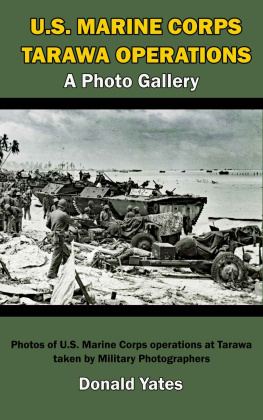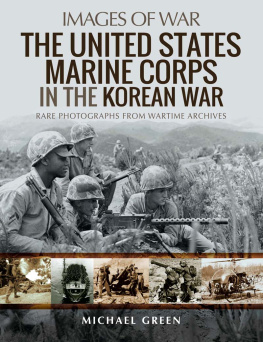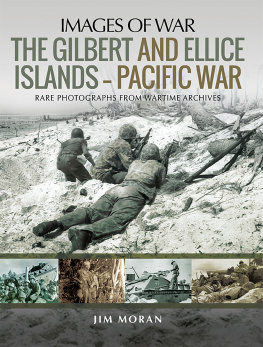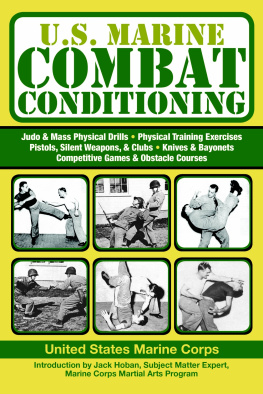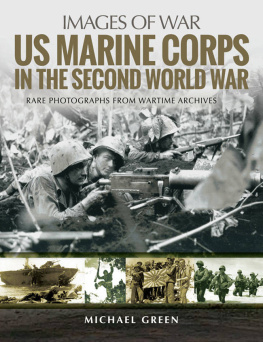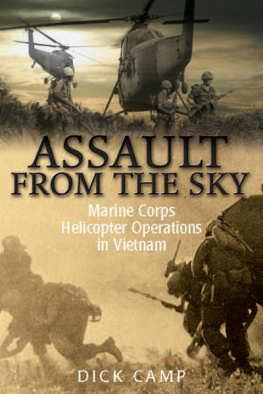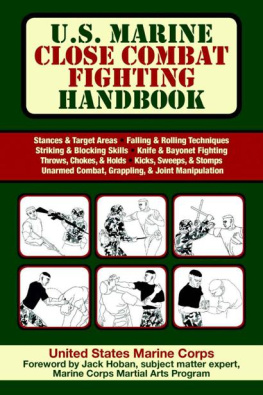Thank you for purchasing Marine Corps Tarawa Operations.
The battle for Tarawa took place between November 20-23 in 1943. The significance of this battle that it was the first-time during World War II that the U.S. Marines would attempt to invade an island occupied by a large Japanese force that was well-supplied and armed.
Although the Marines were successful, they took very heavy losses. The battle was an eye-opener for the Navy-Marine Corps leadership, as well as the American public that was horrified by the heavy losses taken. Tarawa led to changes in the way island invasions in the future were approached by the Marines. For instance, half the Tarawa Marine losses were caused by enemy fire and drownings that occurred during the 500-meter walk through the coral reef shoreline to the landing area. After this battle the Navy began an underwater demolition/reconnaissance team training program, which was the forerunner of the current well-known Seals special operators. In future island invasions lanes would be blasted through an islands coral to allow Marines to be more safely transported to the landing area.
In this book we will show you over 50 photos taken by combat photographers of the Marines, Navy and Coast Guard. Be warned that many of these photos are very graphic featuring dead and severely injured fighting men from both the United States and Japan. Most of the photo descriptions where what was with the photos in the National Archives. There was some minor editing to these.
I dedicate this book in honor of the many men on both sides who fought valiantly and lost their lives during the battle for Tarawa.
Tarawa Invasion Photo Gallery
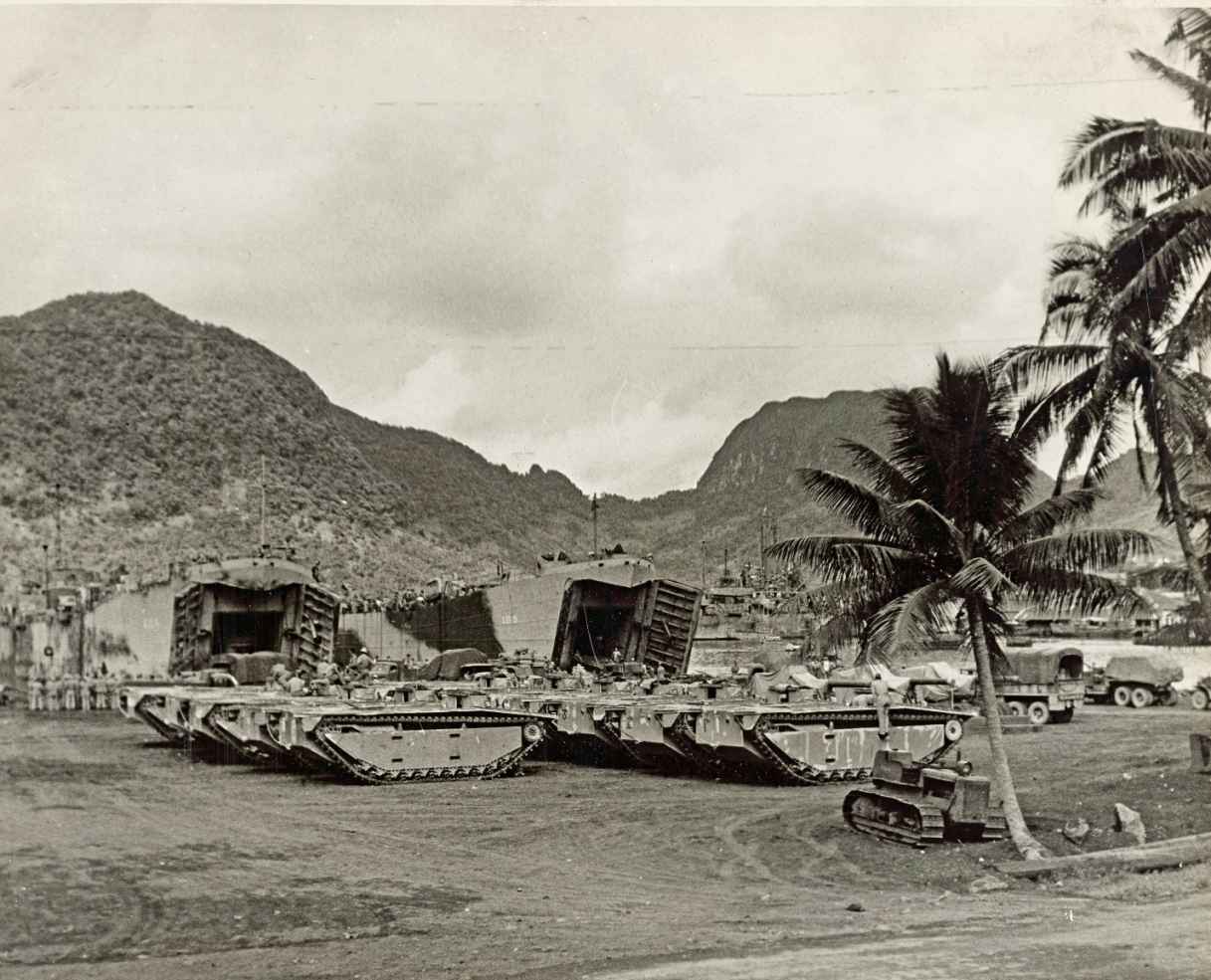
Somewhere in the Pacific, a Marine division embarks with alligators and big guns for the invasion of Tarawa in the Gilbert Islands. Manned by Coast Guardsmen, LSTs carried the Marines to the Japanese-held atoll and debarked them for the historic seizure of the enemy island fort.
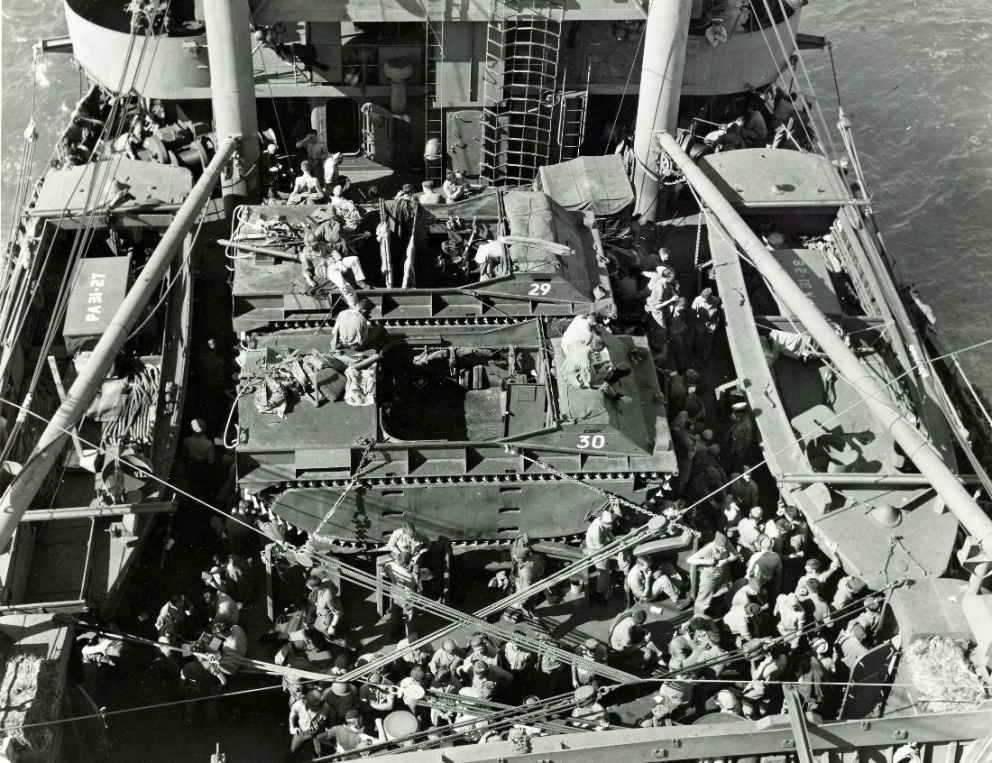
Marines aboard a troop transport ship headed to Tarawa.

Little suspecting the hell that awaits them, U.S. Marines wait aboard a Coast Guard manned combat transport at Tarawa for the invasion barges that will take them ashore. Beyond the rail Coast Guard coxswains can be seen maneuvering loaded barges. On the horizon other vessels are faintly visible.
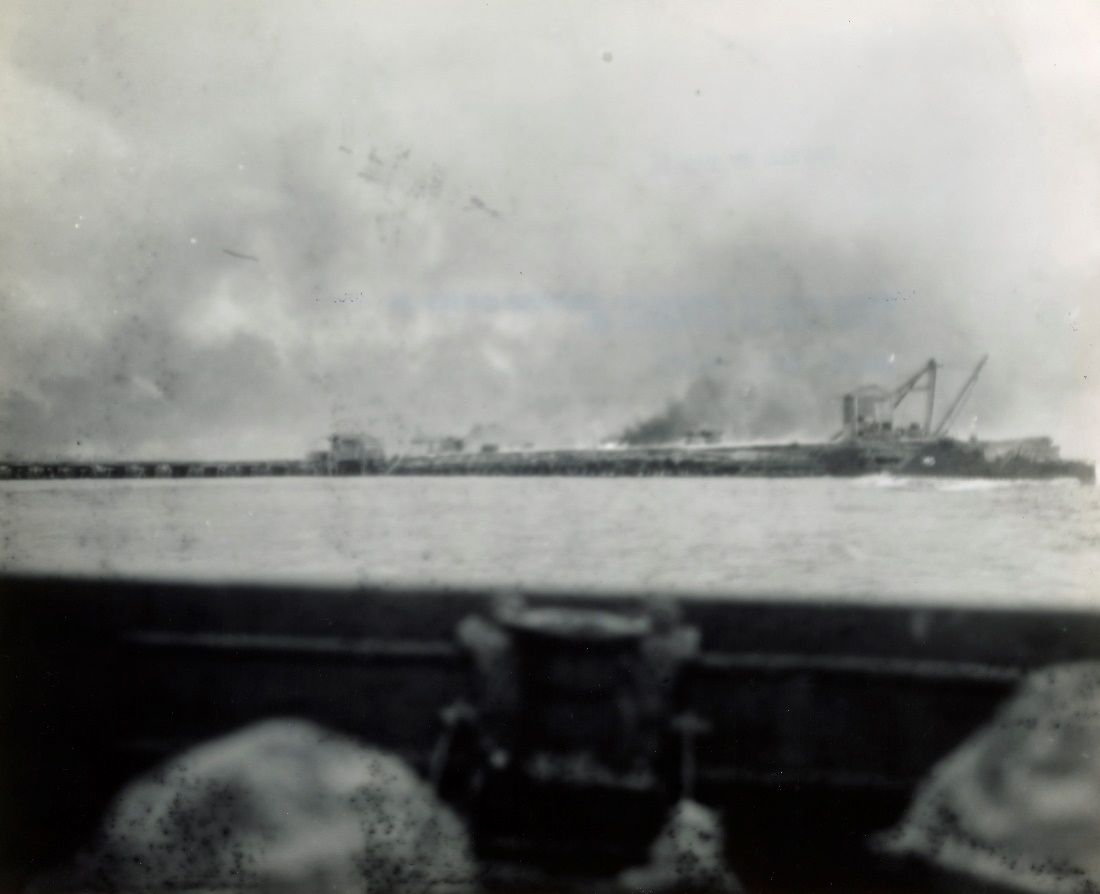
First wave of amphibious tractors moving in along pier to Red Beach No. 3.
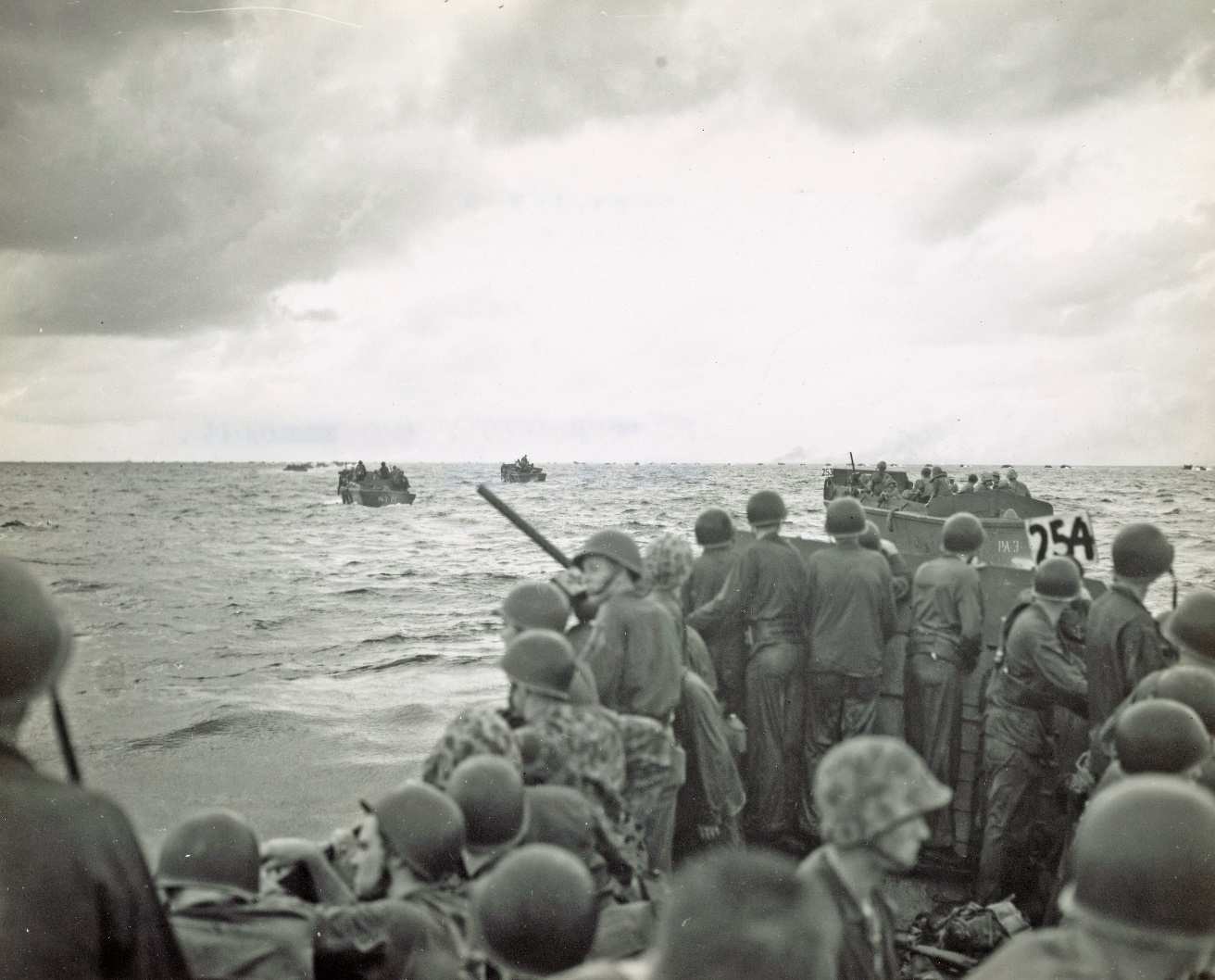
Marines in the first wave of the landing force.
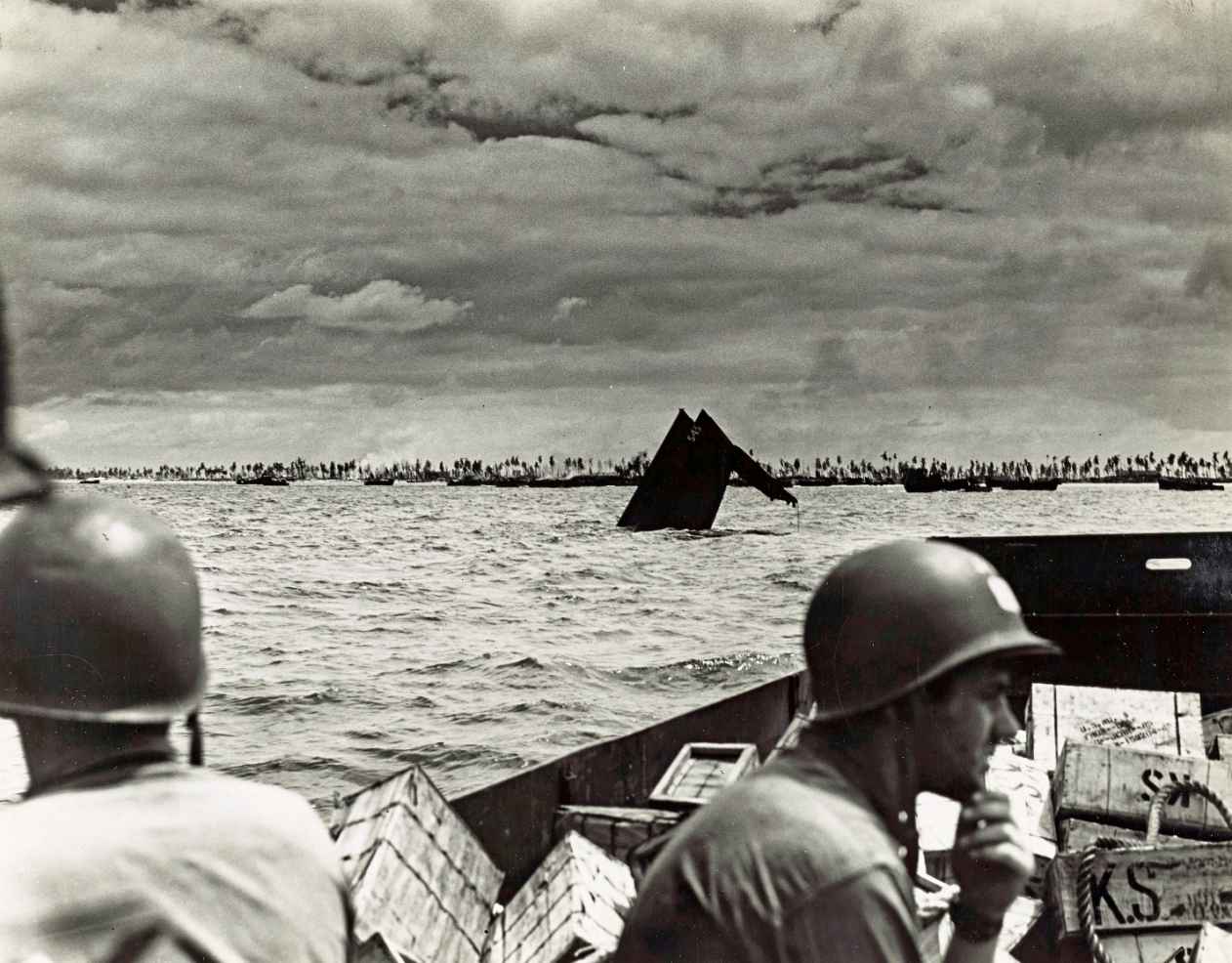
U.S. Coast Guardsmen at Tarawa pass the protruding hulk of an American tank lighter, wrecked by a direct hit from a heavy shore gun, as they bring supplies to the beachhead. The men were under fire when this picture was taken by a photographer attached to a Coast Guard combat transport operating as a unit of a Navy task force.
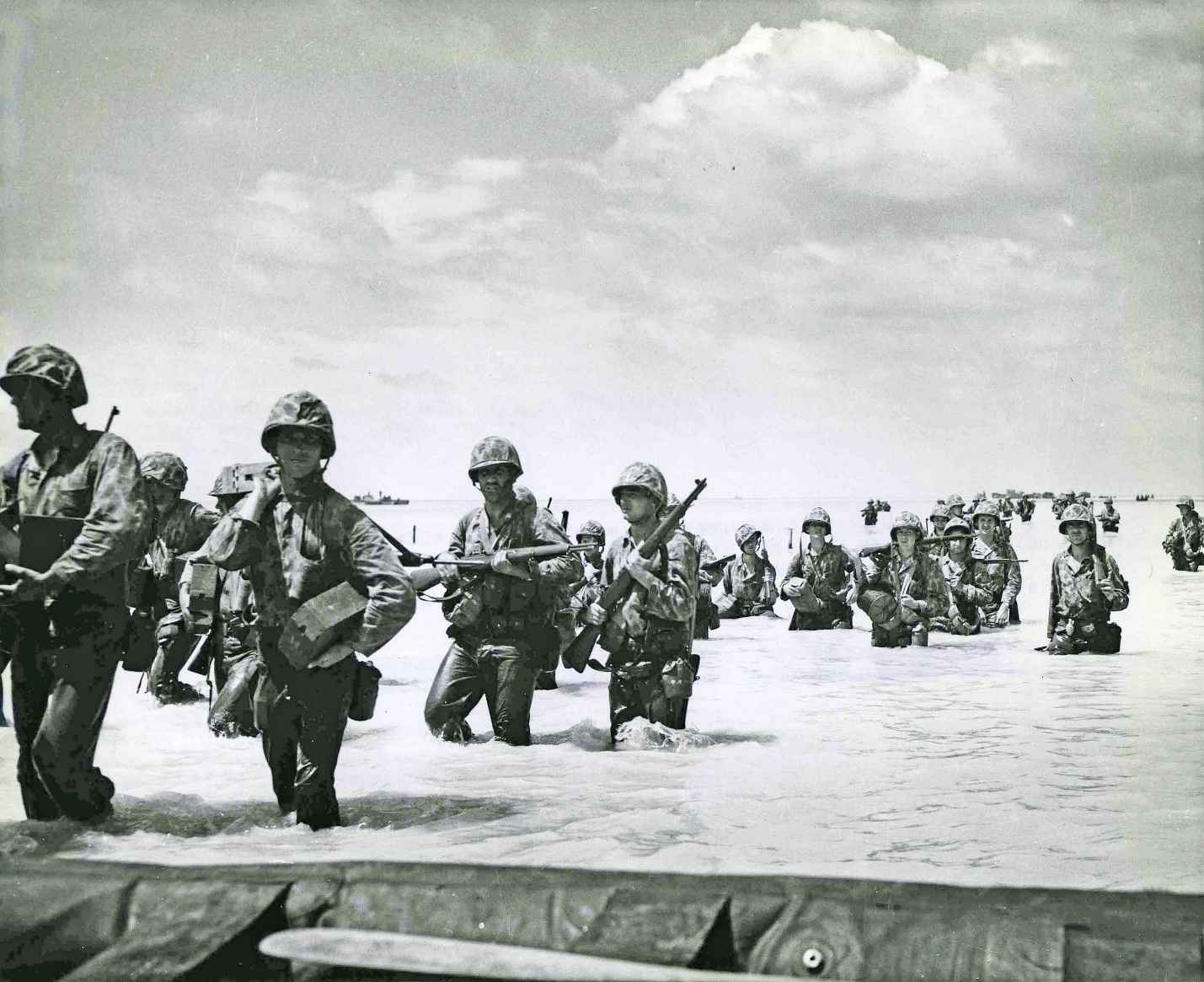
Despite enemy fire, Marines wade through the surf off Tarawa Island. Landing boats and barges brought them to within 500 yards of the beach but the coral bottom prevented the boats coming any closer to the shore.
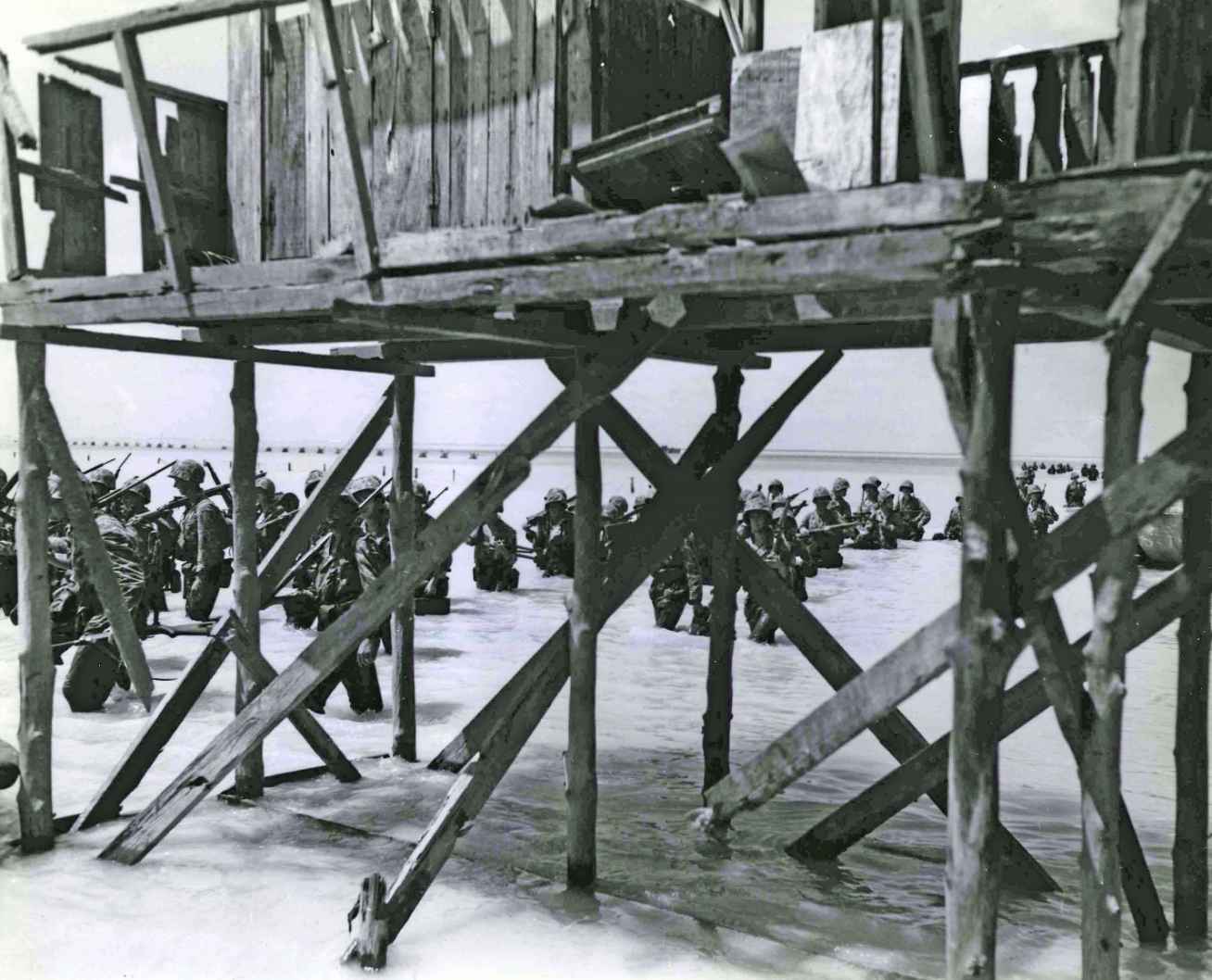
Marines wading through the water off Tarawa.
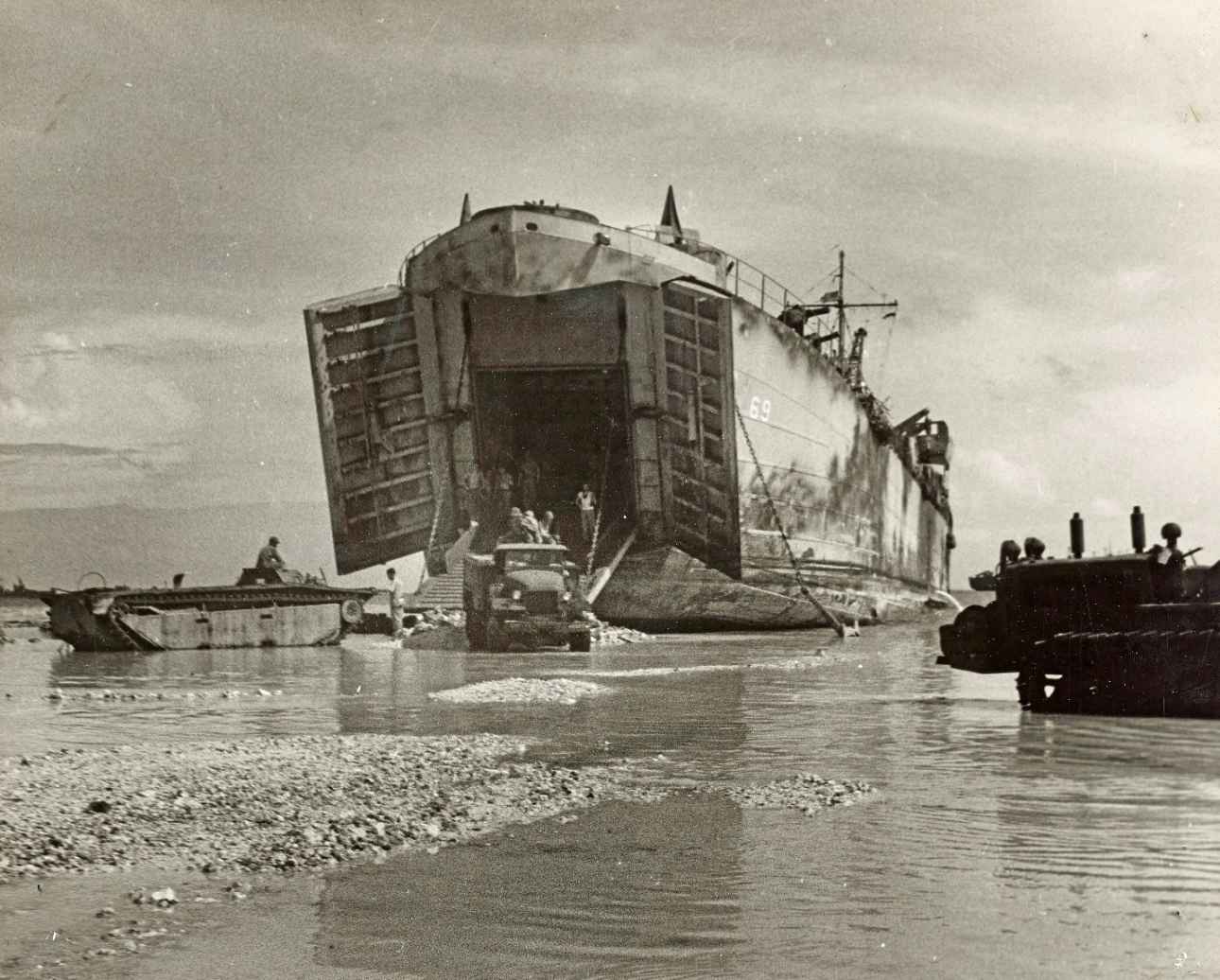
At Bititu Island, Tarawa Atoll, trucks run supplies from the belly of a Coast Guard-manned LST across protecting reefs that guarded the heavily-fortified island. Five hundred yards of reef girded the shore, according to Coast Guard Lieut. R.T. Leary of Green Farms, Conn., who commanded this LST.
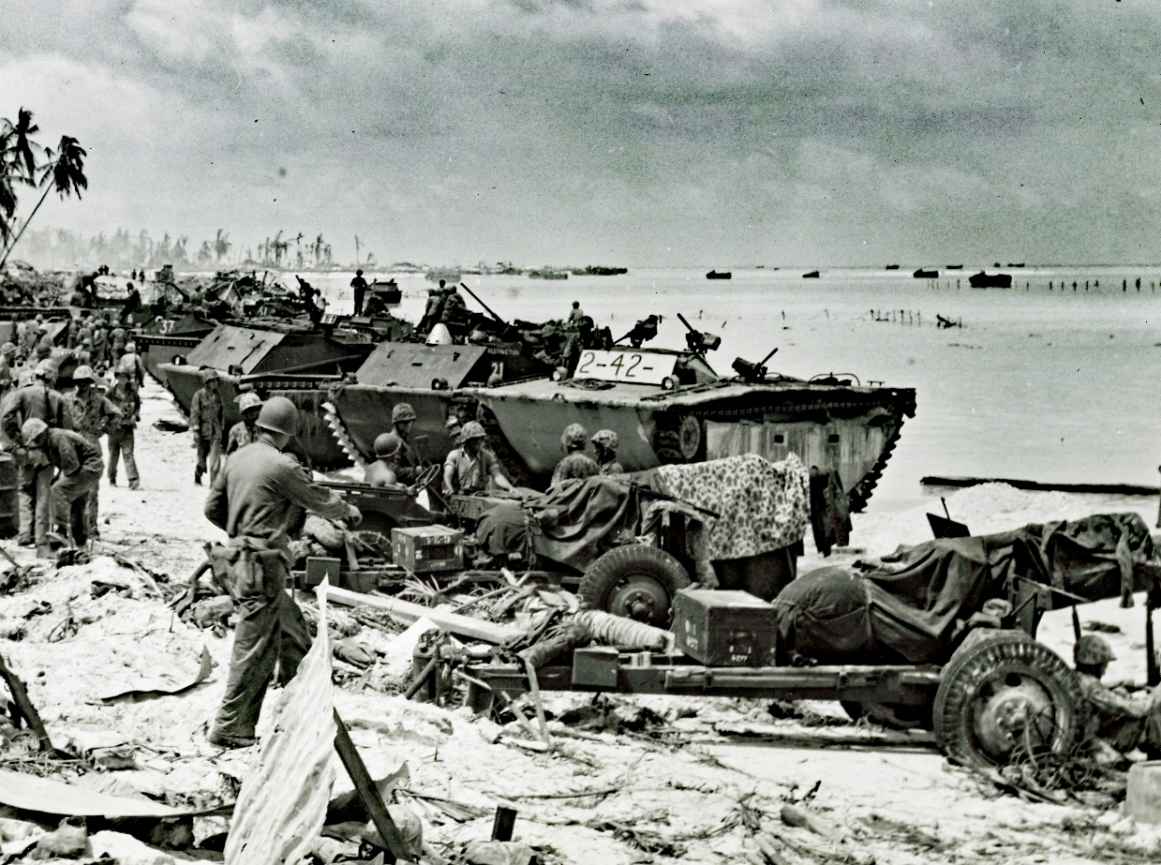
Scene on Red Beach No. 2.
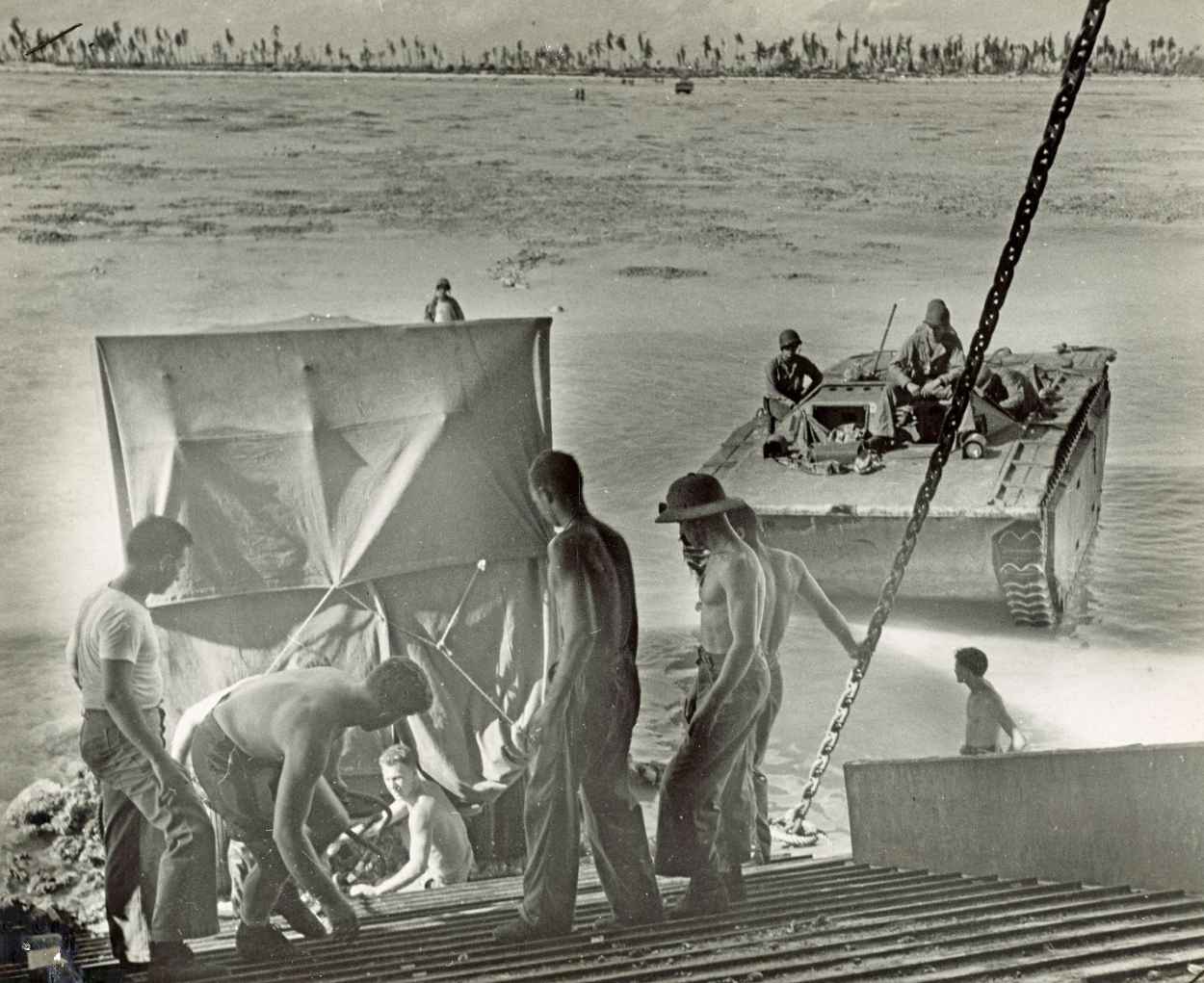
Crew members of a Coast Guard manned LST unload heavy equipment at Bititu island, Tarawa, during the invasion. The alligator at the right was used for unloading, during high tide, the equipment of Marines was carried aboard the vessel.
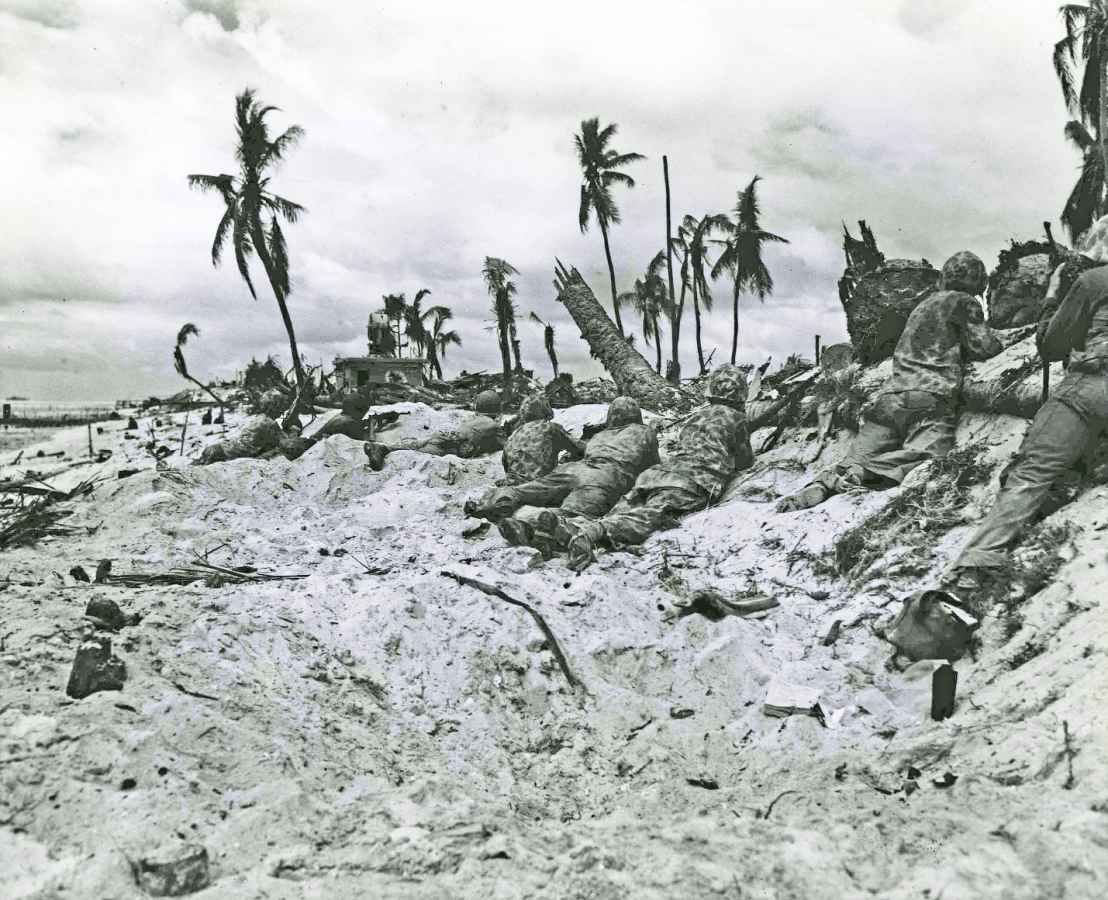
Marines on a Tarawa beach take their positions to attack the airport there. Armed with rifles and other automatic weapons these Marines picked off the Japanese until the island was theirs.
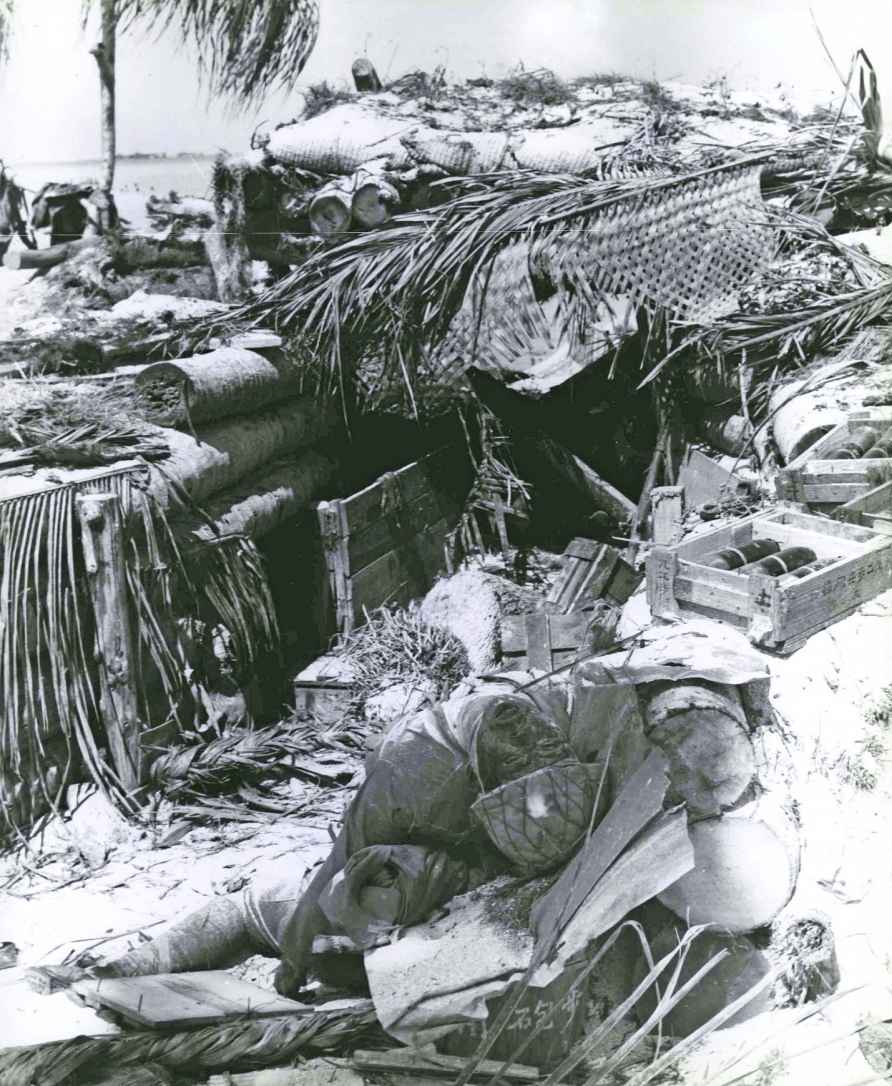
A dead Japanese soldier lies near the gun shelter of a 77mm gun they used to defend Tarawa against the Marines who landed there. Apparently the soldier was either going for more ammunition (right) or heading for the shelter.


